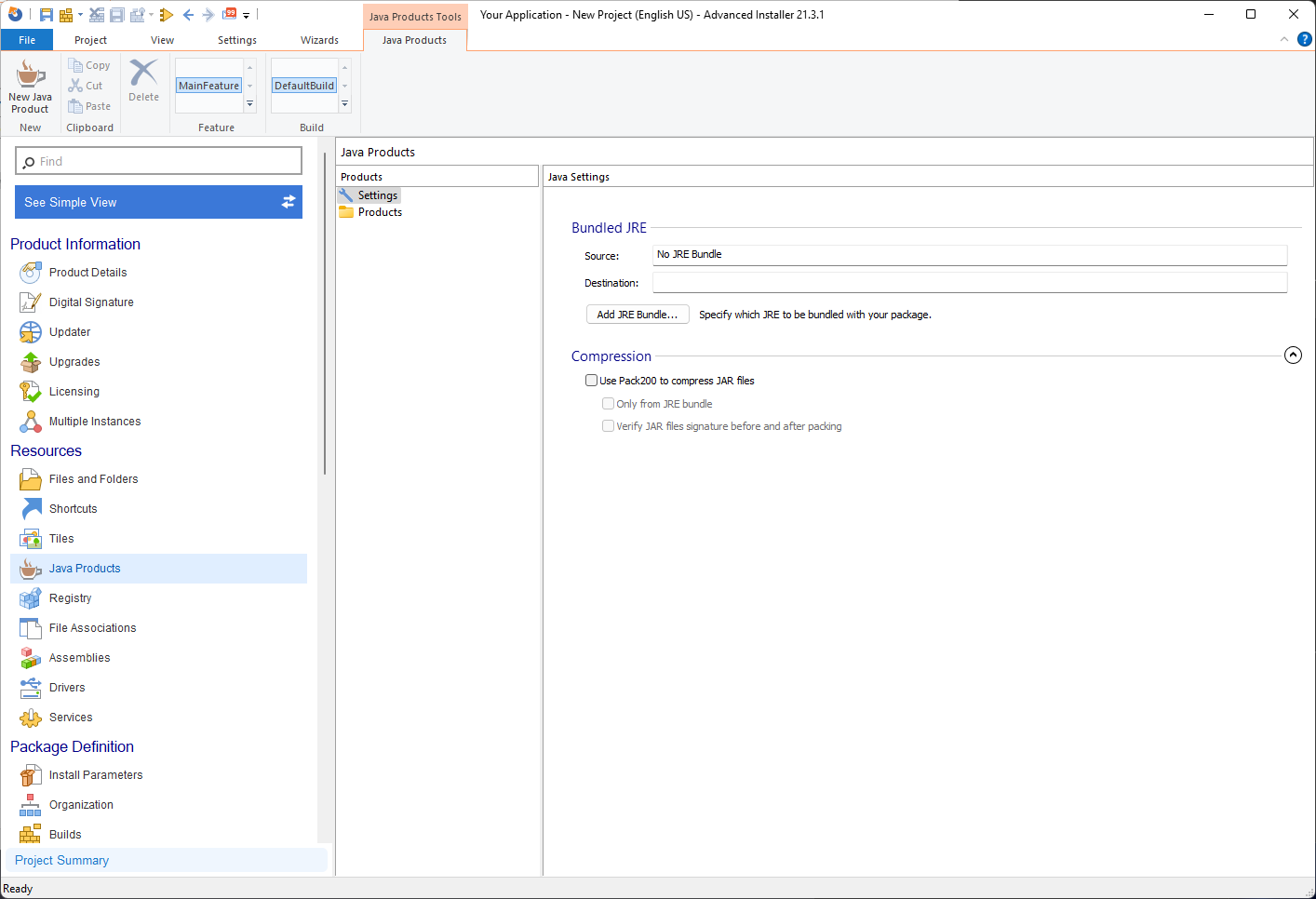What is a JAR File and How to Package it into an MSI?
In the world of software development, especially within the Java ecosystem, JAR files are a fundamental component. Standing for Java Archive, a JAR file is essential for packaging, deploying, and distributing Java applications.
In this article, we delve into what a JAR file is, its significance, and its applications in Java development.
What is a JAR File?
A JAR (Java Archive) file is a package file format typically used to aggregate many Java class files and associated metadata and resources (text, images, etc.) into one file for efficient distribution. These files are built on the ZIP file format and have the `.jar` file extension.
JAR files streamline the storage and distribution of Java programs and libraries. They generally contain:
- Java Class Files: Compiled Java code that can be executed on the Java Virtual Machine (JVM).
- Manifest File: Named `MANIFEST.MF`, this special file in the `META-INF` directory contains metadata about the files in the archive, such as their entry points and security configurations.
JAR files are widely used because they simplify the distribution of Java applications and libraries by consolidating multiple files into one single archive. Their platform-independent nature means they can run on any device with a Java Virtual Machine (JVM), thus enhancing the portability of Java applications.
Additionally, JAR files offer a layer of security as they can be digitally signed, enabling developers to authenticate the source and ensure the integrity of the file contents.
Moreover, JAR files utilize ZIP compression, which helps reduce the file size, leading to quicker download and deployment times.
JAR files come in two main types:
- An Executable JAR, which includes a manifest file that identifies the application's entry point, enables the JAR to be run as an executable program.
- A Library JAR which serves as a resource for other Java applications and is not designed to be executed independently.
Creating and Executing JAR Files
Creating JAR files involves the `jar` utility of the JDK (Java Development Kit), with a basic command format:
jar cf jar-file input-file(s)
Developers can also use build tools like Maven or Gradle for more complex builds.
To execute a JAR file, use the `java` command with the `-jar` option, as follows:
java -jar filename.jar
This command instructs the JVM to run the specified JAR file, assuming it contains executable classes.

Streamlining Java Product Deployment with Advanced Installer
Advanced Installer stands as an essential tool for developers, especially when it comes to deploying Java products. Recognizing the unique needs of Java applications, Advanced Installer offers a specialized page tailored exclusively for Java products. This intuitive interface is designed with ease of use in mind, allowing developers to quickly package Java applications without delving into complexities.
To demonstrate the simplicity and efficiency of Advanced Installer, let's consider a basic "Hello World" example JAR file. In Advanced Installer, navigate to the Java Products page, a centralized spot for all Java-related packaging actions.

With a straightforward click on the ‘New Java Product’ button, we can initiate the process of packaging our Java application.

We then select the "Hello World" JAR file. This step is as simple as browsing to the file’s location and selecting it.

Once the JAR file is selected, Advanced Installer takes over. The tool automatically configures the necessary settings to create an MSI package out of the Java application. This automation includes setting up the application’s launch conditions, file associations, and other necessary configurations without any manual intervention.

Advanced Installer greatly benefits developers by simplifying the packaging process, which significantly reduces the amount of effort and technical expertise required from them.
The tool's automatic configuration feature helps in creating error-free packages, minimizing the risks associated with manual setups. This not only saves a considerable amount of time for developers but also allows them to concentrate more on the development side rather than the intricacies of installation. The outcome of using Advanced Installer is a sleek, professional MSI installer that is perfectly suited for distribution.
Conclusion
JAR files are a vital part of Java programming, offering an efficient way to package, share, and execute Java applications and libraries. They embody the platform-independent nature of Java, ensuring applications can be easily distributed and run across different environments.
Whether you are a seasoned Java developer or just starting, understanding and effectively utilizing JAR files is essential for successful Java application development.
For Java developers looking to streamline their application deployment, Advanced Installer emerges as a powerful ally. Its dedicated Java Products page exemplifies the commitment to making software packaging and deployment as effortless as possible. Whether it's a simple "Hello World" application or a more complex Java product, Advanced Installer ensures a smooth, error-free transition to a reliable MSI package.
Don't miss out on the latest trends, tips, and tools in application packaging.Subscribe to our blog today and be the first to receive cutting-edge insights and practical tutorials directly in your inbox.Subscribe Now!
